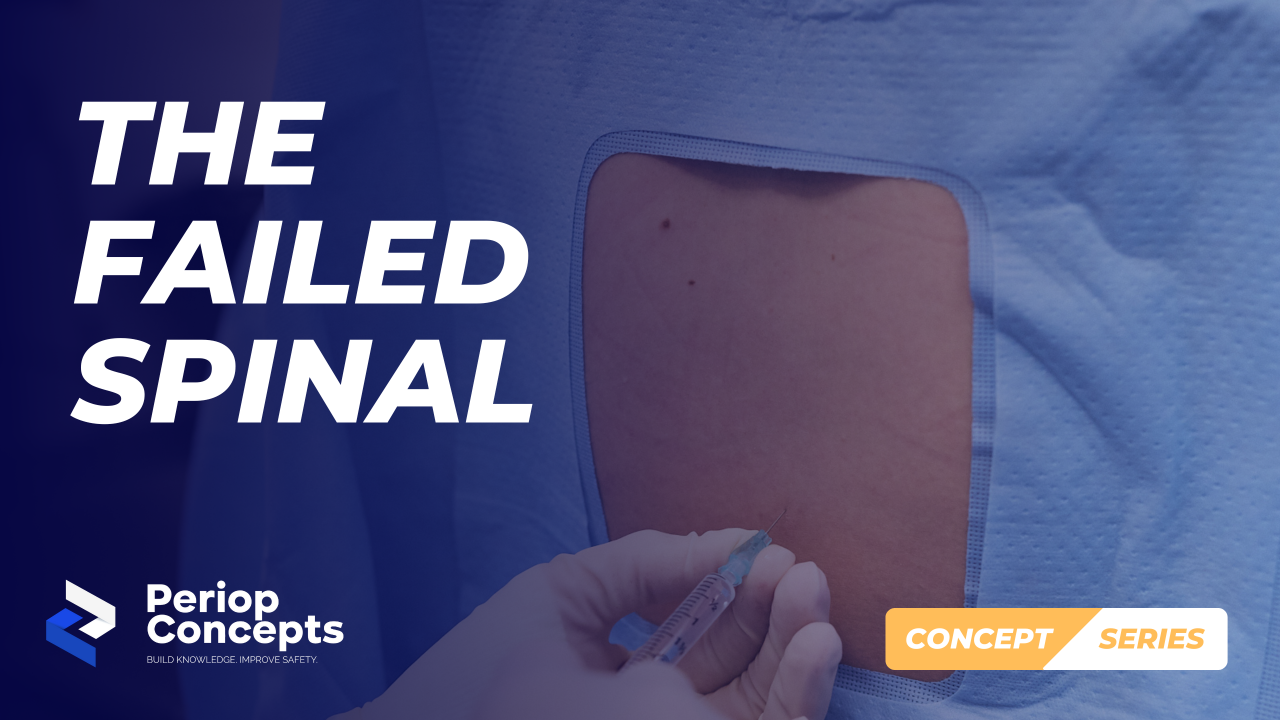The Failed Spinal Explained
block education obstetrics anaesthesia patient safety spinal Nov 20, 2025
Spinal anaesthesia for obstetric patients has a failure rate of about 1-5% 🤯
Spinals usually fail in 3 ways: 🆘
👉 no block at all
👉 block not high enough
👉 block wears off too early
It is standard practice to check the block with ice before starting the procedure, and a block to ice at T6 is the goal. Regardless of the block height, if the patient is feeling pain it should be addressed promptly! 🧊🧊
When a spinal fails, you have 3 options (3 R’s):
1️⃣ Repeat:
If you haven’t started the surgery yet, the anaesthetist might have another attempt. They may alter the dose the for second attempt to avoid a high block.
2️⃣ Revive
If you haven’t started the surgery yet you may be able to increase the height of the block by positioning the patient slightly head down and waiting another 10 mins.
3️⃣ Recourse
If the surgery has started, you may need to convert to a GA. Occasionally, if the baby has been delivered, some IV analgesia might also be appropriate.
Have a look at our Concept Series blog on GA Caesar for more information! 😎
Build knowledge ✅
Improve safety ✅
Stay connected with news and updates!
Join our mailing list to receive the latest news and updates from our team.
Don't worry, your information will not be shared.
We hate SPAM. We will never sell your information, for any reason.

Unlock Exclusive Free Content
Join the mailing list. We give too much great content away for free, see what all the fuss is about.
Categories
All Categories abg acid base adrenaline adrenaline dosing adrenaline in anaphylaxis adverse reaction aed ahpra ahpra audit airway airway adjuncts airway assessment airway emergency airway filter airway management airway mass airway rescue airway trauma airwaylifeline airwayoptimisation algorithm allergy als als aftercare alsmedications amiodarone anaesthesia anaesthetic anaesthetic machine anaesthetics analgesia anaphylactoid anaphylaxis anaphylaxis aftercare anaphylaxis diagnosis anaphylaxis differential diagnosis anaphylaxis management anaphylaxis triggers anatomy antibiotics anzaag anzcor apnoea arrest arterial blood gas arterial line arterial line complications arterial line errors arterial lines arterialcannulation arteriallines asa article asl aspiration aspiration risk assessing pain assessment awareness bag mask ventilation behaviours of concern beta blockers bis bispectral index blade bleeding bleeding airway block blocks blood blood pressure blood pressure monitoring blood products blood safety bluey boundaries breathing circuit bronchoscopy bronchospasm burns cannula technique cannulation capnography cardiac arrest cardiac output cardiac surgery cardiovascular causesofcardiacarrest cell saver central venous catheter centralvenouscatheter cerebral oximetry checklist checklists chlorhexidine cico circadian cycle circuit climate climate change closed loop communication co2 coagulation cognitive aid colonoscopy communication complications compression rates compressions contaminant coolinginmh core body temperature cpd cpr cricoid pressure cricothyrotomy crisis resource management critical incident cross matching cvc cvc complications dantrolene debriefing defibrillation dental surgery depth of anaesthesia diabetes diagnostics difficult airway drug errors drug safety drugs ecg education educator emergence delirium emergency emergency management emotional intelligence end tidal carbon dioxide endoscopy endotracheal tubes ent entropy environment epidural anaesthesia equipment ercp ett exchange catheter exercise fasting feedback ffp fluid balance fluid resuscitation fluid therapy fona formal diagnosis frailty ga gas gas analysis gastroscopy general anaesthetic gloves glp-1 ra glp-1 receptor agonists glp-1ras haemodynamic haemoglobin haemorrhage haemostasis handle handover hazard health heart rate hemodynamics hereditarydisorder high flow hot debrief human factors hypnosis hypotension hypoxia icu immune response incomplete reversal induction infection infection control inotropes intravenous intravenous cannulation intubation invasive blood pressure monitoring invasive device invasivebloodpressuremonitoring iv induction ketamine laryngeal mask laryngectomy laryngoscope laryngospasm leadership learning lifelines lma local anaesthetic long term venous access major surgery malignanthyperthermia mallampati mask ventilation massive transfusion massive transfusion protocol mast cells mean arterial pressure medications mh mhtesting mls monitoring movement muscle relaxants neck surgery nerve blocks nerve monitoring neuraxial neuromuscular blockade neuromuscular junction nmt non-invasive blood pressure non-shockable rhythms nurse burnout nurse education nurse wellbeing nursing nutrition obstetric obstetrics anaesthesia obstruction opioid opioids ot oxygen oxygenation ozempic paediatric paediatric anaesthesia paediatric t piece paediatrics pain pain management patient safety perianaesthesia nurse educator perioperative perioperativenursing pipeline positioning post operative preoperative preoperative care preoxygenation primary survey professional development protocol publications pulmonary radiation rapid sequence induction recovery recovery issues recovery room emeregencies refractory anaphyalxis refractory hypotension regionalanaesthesia renal resilience resources resuscitation reversal rotem safe apnoea time safety scalpel scalpel technique sedation seldinger shared airway shockable rhythms signs of anaphylaxis skin prick testing sleep spinal spinal anaesthetic sterile procedures stress reduction surgery surgical safety checklist tachycardia teaching styles team time-out teamwork teg temperature testing tonsillectomy tracheostomy transfusion transfusion reaction trauma treatment tryptase ultrasound ultrasoundprobes vascular surgery ventilation vf videolaryngoscope volatileagents vortex approach vt waste wellbeing
